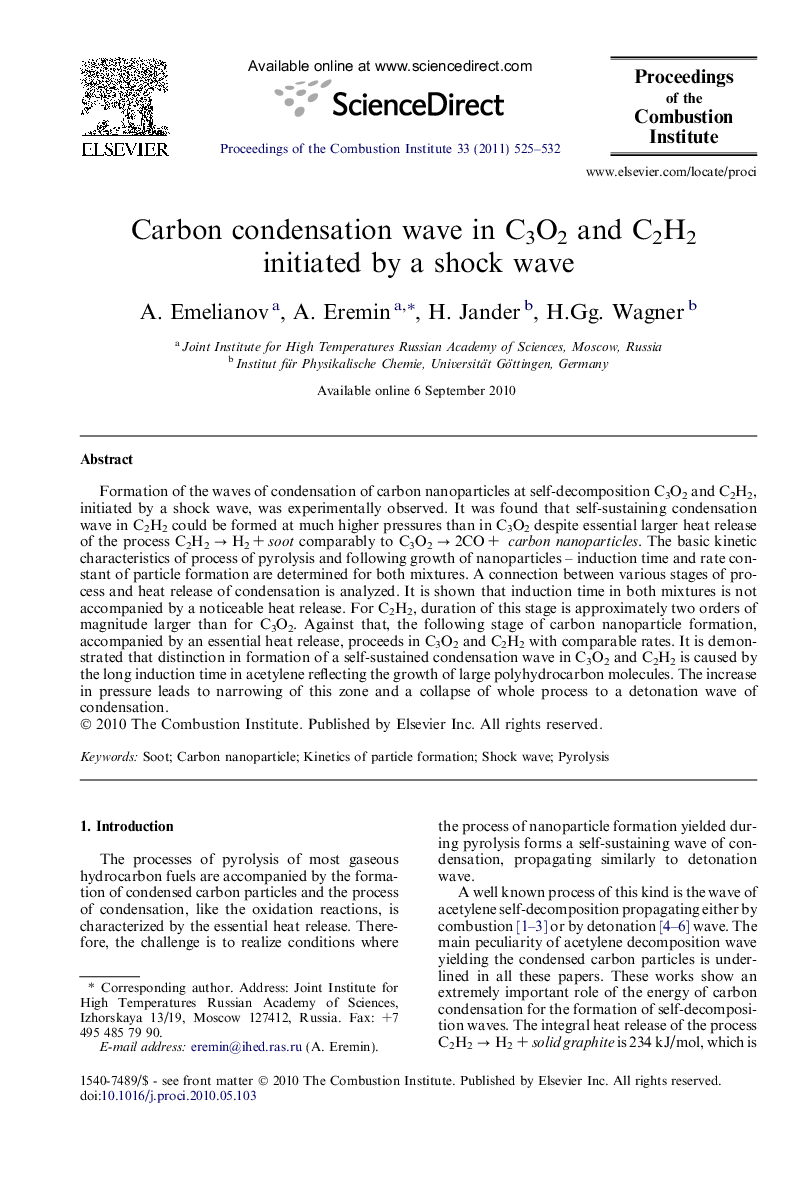| Article ID | Journal | Published Year | Pages | File Type |
|---|---|---|---|---|
| 241359 | Proceedings of the Combustion Institute | 2011 | 8 Pages |
Formation of the waves of condensation of carbon nanoparticles at self-decomposition С3О2 and С2Н2, initiated by a shock wave, was experimentally observed. It was found that self-sustaining condensation wave in С2Н2 could be formed at much higher pressures than in С3О2 despite essential larger heat release of the process C2H2 → H2 + soot comparably to C3O2 → 2CO + carbon nanoparticles. The basic kinetic characteristics of process of pyrolysis and following growth of nanoparticles – induction time and rate constant of particle formation are determined for both mixtures. A connection between various stages of process and heat release of condensation is analyzed. It is shown that induction time in both mixtures is not accompanied by a noticeable heat release. For C2H2, duration of this stage is approximately two orders of magnitude larger than for С3О2. Against that, the following stage of carbon nanoparticle formation, accompanied by an essential heat release, proceeds in С3О2 and С2Н2 with comparable rates. It is demonstrated that distinction in formation of a self-sustained condensation wave in С3О2 and С2Н2 is caused by the long induction time in acetylene reflecting the growth of large polyhydrocarbon molecules. The increase in pressure leads to narrowing of this zone and a collapse of whole process to a detonation wave of condensation.
